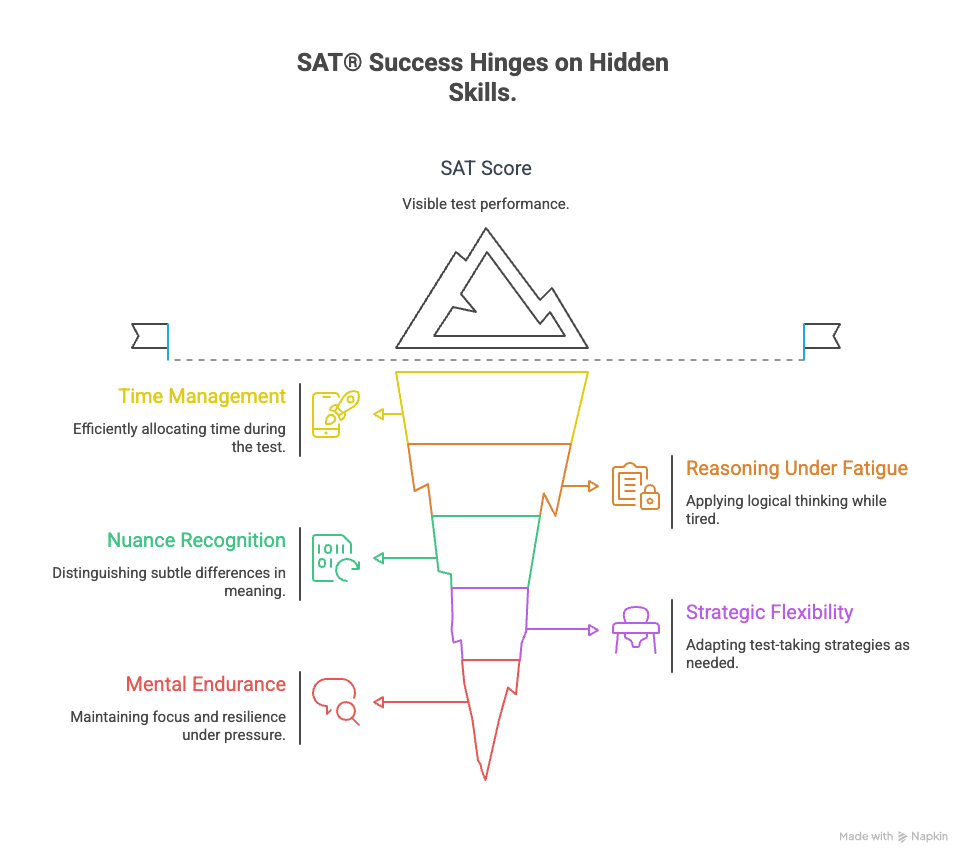There’s a curriculum every student knows:
- Equations to solve.
- Words to memorize.
- Formats to follow.
And then there’s the one no one talks about. It’s not on the SAT®. It’s not in your GPA. But it’s shaping your future more than either. It’s the hidden curriculum: your ability to stay curious, stay consistent, and stay confident, especially when things get hard. This is foundational for effective SAT® prep.
What is the Hidden Curriculum in Education?
In educational psychology, the "hidden curriculum" refers to the unspoken lessons school teaches you:
- How to follow rules.
- How to measure success.
- How to compete or conform.
But there’s a deeper layer, one even school doesn’t always intend to teach. It’s how you respond to challenges, how you treat your time, and how you talk to yourself when you fail. These skills don’t show up on your transcript, but they determine whether you learn for life or just survive exams. For SAT® prep, these are the true SAT® study strategies that lead to mental resilience.
1. Curiosity: The Antidote to Cynicism for SAT® Prep
Curiosity isn’t just about asking questions. It’s about staying open when the answer doesn’t come easily. As Seneca wisely noted, "We suffer more often in imagination than in reality."
Most students shut down when they hit something hard in their SAT® prep. Curious students lean in, not because it’s easy, but because they trust there’s something worth discovering.
How to Practice It for Your SAT® Study Strategies:
- When confused during SAT® prep, ask: "What am I missing?" instead of "Why am I dumb?"
- Google something beyond the SAT® syllabus once a week, not for points, but for pure wonder.
- Pick one question from every SAT® practice test you got right and ask why the other answers were wrong.
Curiosity trains your brain to seek truth, not shortcuts, enhancing your SAT® and mental resilience.
2. Consistency: The Opposite of Hustle Culture for SAT® Prep
Consistency isn’t about perfection. It’s about showing up even when it’s not ideal. As Marcus Aurelius put it, "Waste no more time arguing what a good person should be. Be one."
You don’t need motivation every day for SAT® prep. You need systems that still work on days when your motivation fails.
How to Practice It for Your SAT® Study Strategies:
- Use implementation intentions: "If it’s 4:00 pm, I start the hard SAT® topic."
- Create minimum viable SAT® study plans: even 20 minutes counts.
- Time-block your distractions. Don’t eliminate them; control them.
Consistency builds the muscle of follow-through, a cornerstone of effective SAT® study strategies.
3. Confidence: The Foundation of All Growth for SAT® Prep
The most dangerous myth in SAT® prep is this: Confidence comes after you score high. Wrong. Confidence comes when you train yourself to bounce back, speak kindly to yourself, and learn forward.
Seneca observed, "No man is more unhappy than he who never faces adversity. For he is not permitted to prove himself."
How to Practice It for SAT® and Mental Resilience:
- Notice your inner voice after a bad SAT® practice test: would you say that to a friend?
- Stop comparing your SAT® prep timeline to someone else’s highlight reel.
- Track effort, not just outcome. Effort builds character. Outcome builds ego.
Confidence isn’t hype. It’s earned belief, which is vital for your SAT® and mental resilience.






